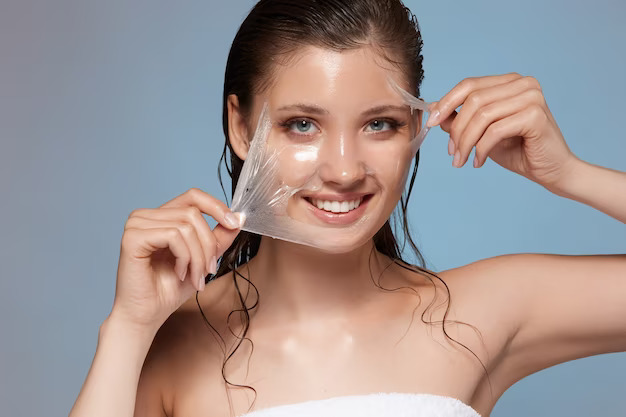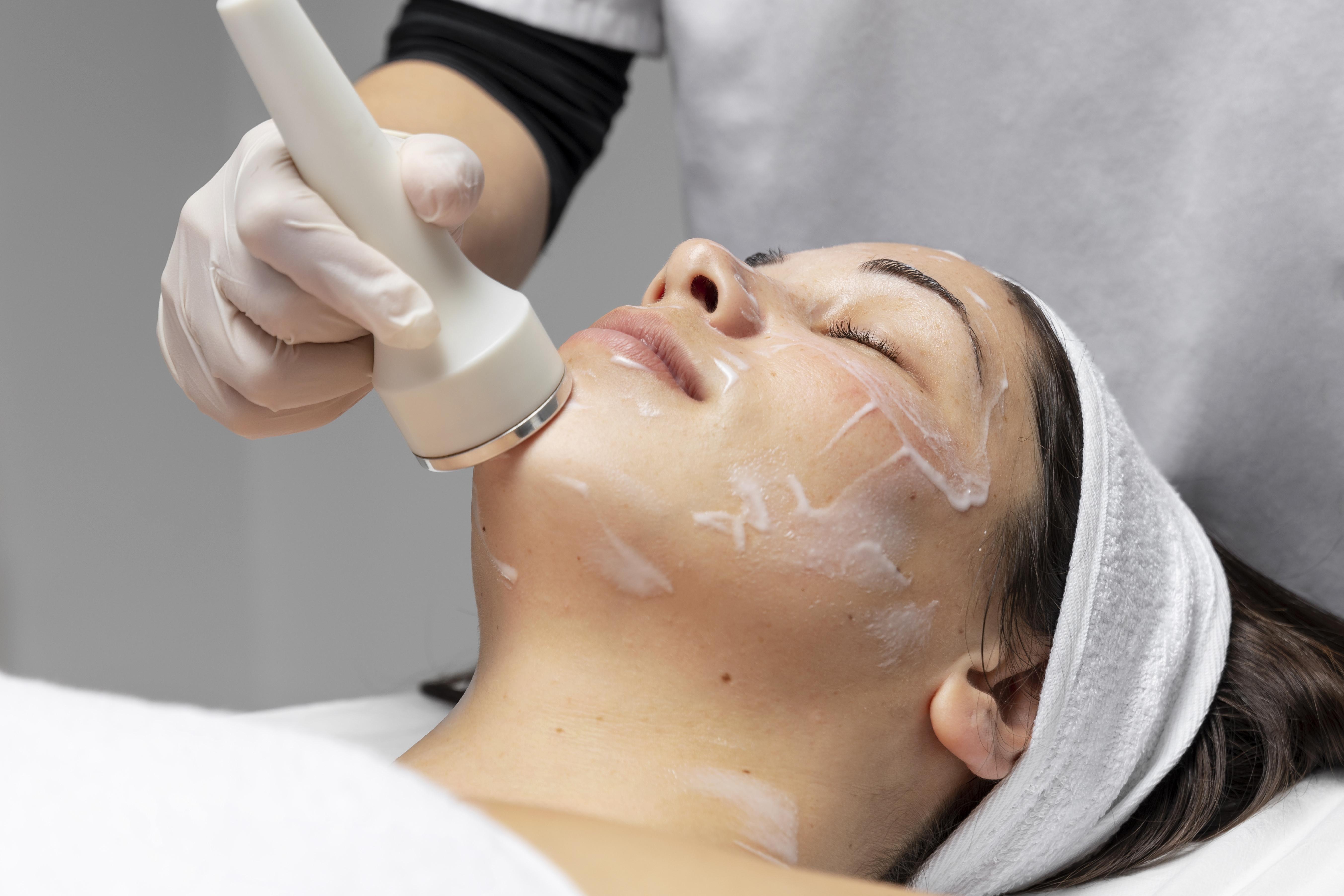English
If you are looking for a simple and effective way to achieve youthful and radiant complexion, peeling might be the solution you have been searching for. Peeling is a skincare technique that involves removing the outer layer of dead skin cells and revealing the fresher, smoother, and brighter underlying skin. This process not only helps to unclog pores and reduce the appearance of fine lines and wrinkles but also stimulates collagen production, resulting in firmer, more elastic skin. However, peeling can also help reduce skin tone, fade dark spots, and hyperpigmentation and improve the overall texture and clarity of the skin. In this article, we explore the secret benefits of peeling and share tips on how to incorporate this powerful skincare technique into your routine for youthful and glowing complexions.
How Peeling Works on the Skin
Peeling removes dead cells from the skin surface, which can build up over time, clog pores, and trap oil and dirt, causing acne, blackheads, and other blemishes. Peeling helps remove dead skin cells, giving the skin a fresher, smoother, and brighter appearance.
There are three main types of peeling: chemical, physical, and enzymatic peeling. Chemical peels use acids, such as alpha hydroxy acids (AHAs) and beta hydroxy acids (BHAs), to dissolve dead skin cells. Physical peels such as microdermabrasion use tools or devices to remove dead skin cells. Enzymatic peels use natural enzymes such as papaya or pineapple to dissolve dead skin cells.
Different Types of Peeling
Chemical Peels
Chemical peeling is a popular type of peeling that uses acids to dissolve dead skin cells. There are different types of chemical peels, including light, medium, and deep. Light peels are the mildest type of chemical peels and are suitable for all skin types. They used mild AHAs such as glycolic acid to gently exfoliate the skin. Medium peels use stronger acids such as salicylic acid to penetrate deeper into the skin and remove more dead skin cells. Deep peels use strong acids such as phenol to remove the deepest layers of the skin.
Physical Peels
Physical peels use tools or devices to remove the dead skin cells. Microdermabrasion is a popular type of physical peel that uses a device to exfoliate skin. The device uses a stream of tiny crystals or a diamond-tipped wall to remove the dead skin cells. This type of peeling is suitable for all skin types, but may not be suitable for people with very sensitive skin.
Enzymatic Peels
Enzymatic peels use natural enzymes such as papaya or pineapple to dissolve dead skin cells. This type of peeling is gentle and suitable for all skin types, including the sensitive ones. Enzymatic peeling is a good option for people who want a more natural and gentler peeling approach.
Benefits of Peeling for Youthful and Glowing Skin
Peeling has many benefits for the skin, including
Unclogging Pores
Peeling helps to remove dead skin cells that can clog pores and trap oil and dirt. Peeling can prevent acne, blackheads, and other blemishes by unclogging pores.
Reducing Fine Lines and Wrinkles
Peeling stimulates collagen production, which can help to reduce the appearance of fine lines and wrinkles. Collagen is a protein that gives the skin elasticity and firmness; therefore, stimulating collagen production can help to give the skin a more youthful appearance.
Even Out Skin Tone
Peeling can improve skin tone by removing dead skin cells, which can cause uneven pigmentation. This can help to reduce the appearance of dark spots and hyperpigmentation.
Improving Skin Texture and Clarity
Peeling can help improve the overall texture and clarity of the skin by removing dead skin cells, which can make the skin look dull and tired. By removing dead skin cells, peeling can help to reveal fresher, smoother, and brighter skin.
Precautions to Take Before and After Peeling
Before starting peeling, precautions were taken to ensure that the skin was prepared for the process. First, you should avoid using any products that contain retinoids or exfoliants for at least one week before peeling. These products render the skin more sensitive and increase the risk of skin irritation during peeling.
After peeling, it is important to ensure proper healing of the skin. You should avoid using any products that contain retinoids or exfoliants for at least one week after peeling. You should also avoid exposing your skin to the sun or using tanning beds for at least one week after peeling. Sun exposure increases the risk of hyperpigmentation and other types of skin damage.


Several DIY peeling methods can be used locally. These methods are often more natural and gentle than professional peeling treatments, making them a good option for people with sensitive skins. Some popular DIY peeling methods include the following.
Natural Peels
Natural peels use natural ingredients such as fruit enzymes or yogurt to exfoliate the skin gently. The peels were gentle and suitable for all skin types.
At-Home Peeling Kits
At-home peeling kits are convenient and affordable to achieve the benefits of peeling at home. These kits usually contain a peel solution and a neutralizer that can be applied to the skin to remove dead skin cells.
Professional Peeling Treatments
If a more powerful and effective peeling treatment is desired, professional peeling treatments should be considered. These treatments are usually more potent than the DIY peeling methods, making them a good option for people with more severe skin concerns. Some popular professional peeling treatments include the following.
Chemical Peels
Chemical peeling is a popular professional peeling treatment that uses acids to dissolve the dead skin cells. These peels have different strengths, making them suitable for all types of skins.
Microdermabrasion
Microdermabrasion is a physical peeling treatment that uses a device to exfoliate skin. This treatment is suitable for all skin types and can improve the overall texture and clarity of skin.
Choosing the Right Peeling Method for Your Skin Type
When choosing a peeling method, it is important to consider skin type and concerns. If you have sensitive skin, you may want to opt for a gentler peeling method, such as enzymatic peeling or natural peeling. If there are more severe skin concerns, such as acne or hyperpigmentation, then you may want to consider a more potent peeling treatment such as chemical peeling or microdermabrasion.
Frequently Asked Questions About Peeling
Is peeling suitable for all types of skin?
Yes, peeling is suitable for all skin types; however, it is important to choose the correct peeling method based on the skin type and concerns.
How often should I peel my skin?
The peeling frequency depends on the skin type and concern. If you have sensitive skin, you may want to peel it once a month. If you have more severe skin concerns, you may want to peel up more frequently, up to once per week.
Is peeling painful?
Although peeling should not be painful, mild discomfort or tingling may occur during this process.
Conclusion
Peeling is a powerful skincare technique that can help achieve youthful and glowing complexion. If you opt for a DIY peeling method or professional peeling treatment, peeling can help unclog pores, reduce fine lines and wrinkles, even out of skin tone, and improve the overall texture and clarity of the skin. By taking the necessary precautions before and after peeling and choosing the correct peeling method according to skin type and concerns, you can enjoy the many benefits of peeling for a more youthful and radiant complexion.

